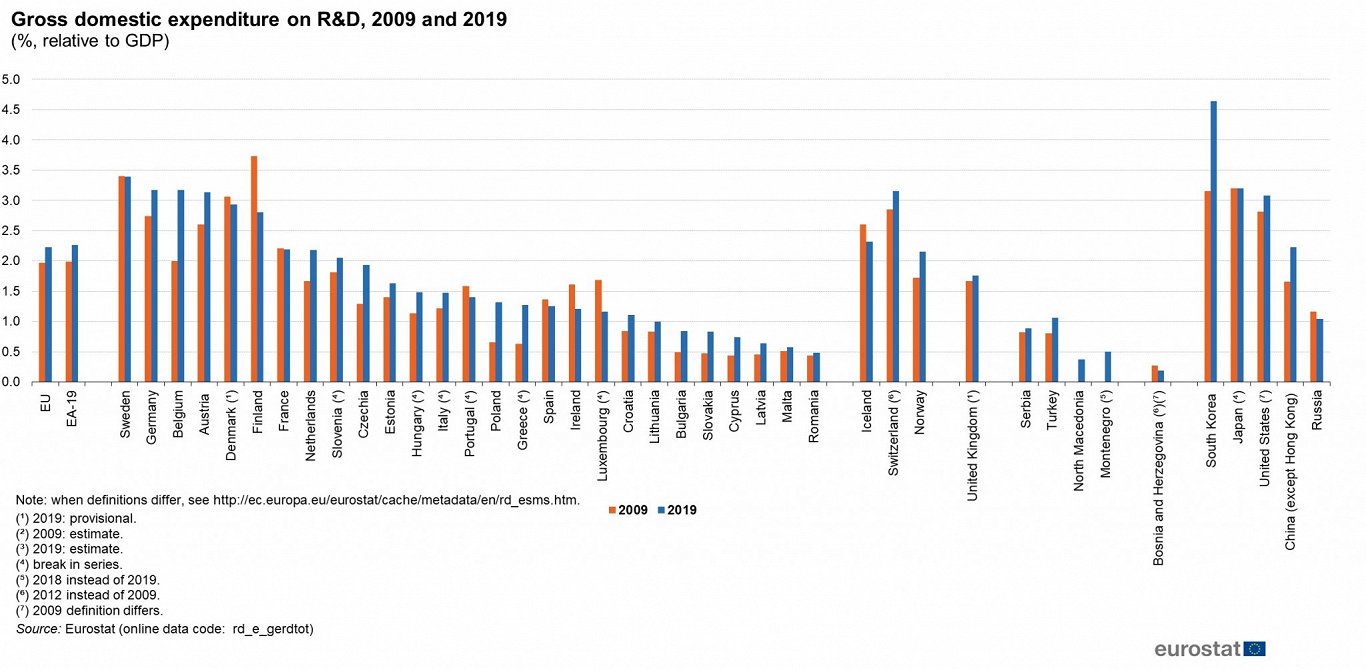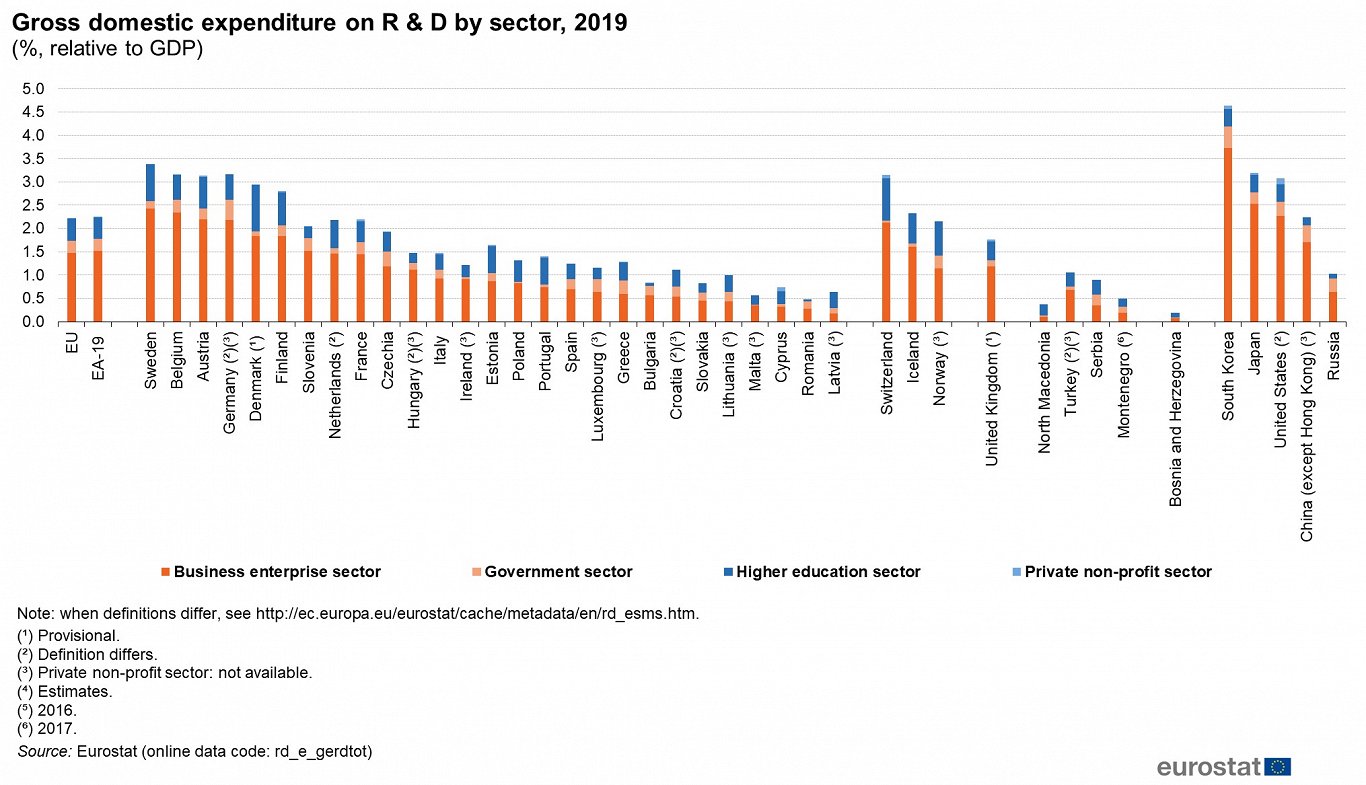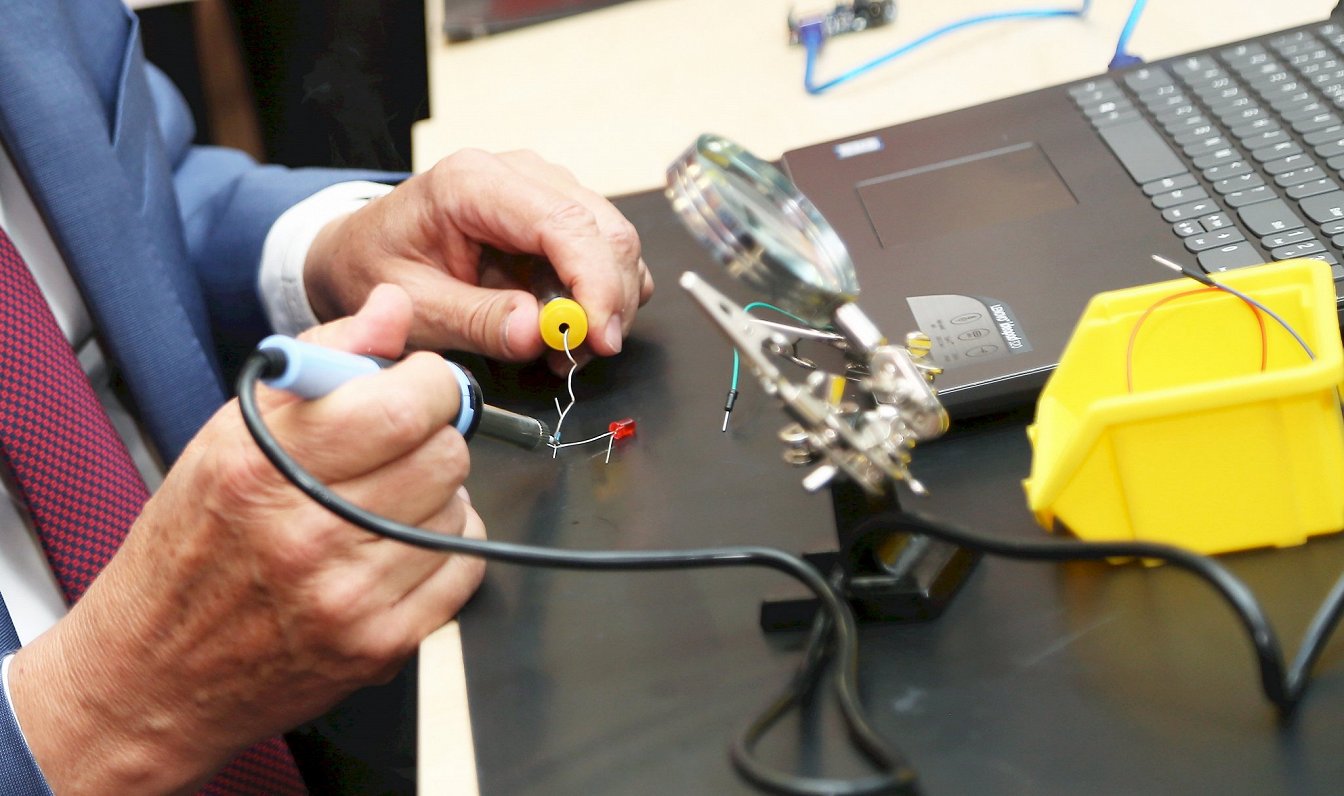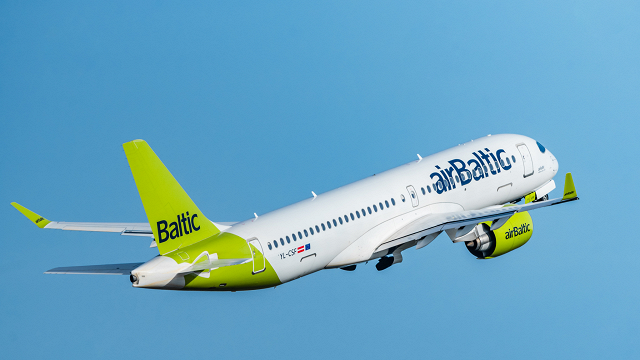Among the EU Member States, the highest R&D intensities in 2019 were recorded in Sweden (3.39 %) followed by Germany and Belgium (both with 3.17 %). The next highest ratios were recorded in Austria (3.13 %) and Denmark (2.93 %).
There were six Member States that reported R&D expenditure that was below 1.00 % of their GDP in 2019; each of these were Member States that joined the EU in 2004 or more recently, with the lowest R & D intensities recorded in Romania (0.48 %), Malta (0.57 %) and Latvia (0.64 %).

Gross domestic expenditure on R&D (GERD) stood at EUR 311.8 billion in the EU in 2019, which equated to an average of EUR 698 of R&D expenditure per inhabitant. There was an increase of 5.75 % on the year before, and 47.5 % higher than 10 years earlier, in 2009 — note that these rates of change are in current prices and so reflect price changes as well as real changes in the level of expenditure.
In order to make figures more comparable, GERD is often expressed relative to GDP — see Figure 1 — or in relation to population. The ratio of GERD to GDP is also known as R&D intensity. This ratio increased modestly in the EU during the period from 2009 to 2012, rising from 1.97 % to 2.08 %. Between 2012 and 2019, it increased more slowly, fluctuating within the range of 2.08 % to 2.23 %. Despite these increases, the EU’s R&D expenditure relative to GDP remained well below the corresponding ratios recorded in Japan (3.20 %) and the United States (3.08 %), as has been the case for a lengthy period of time. R&D intensity in China has come close to that of the EU since 2015, and in 2019 Chinese R&D expenditure was equivalent to 2.23 % of GDP.

The full data sets can be explored here.
One of the key aims of the EU during the last couple of decades has been to encourage increasing levels of research investment, in order to provide a stimulus to the EU’s competitiveness. In May 2021, the European Commission adopted a Communication on a Global Approach to Research and Innovation — Europe’s strategy for international cooperation in a changing world (COM(2021) 252 final).






















